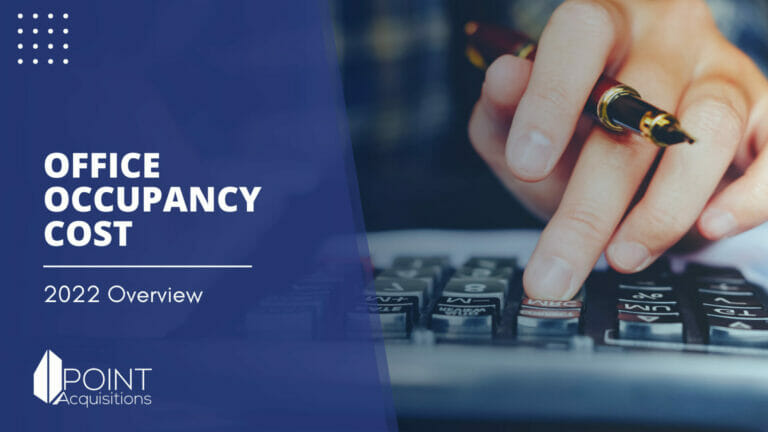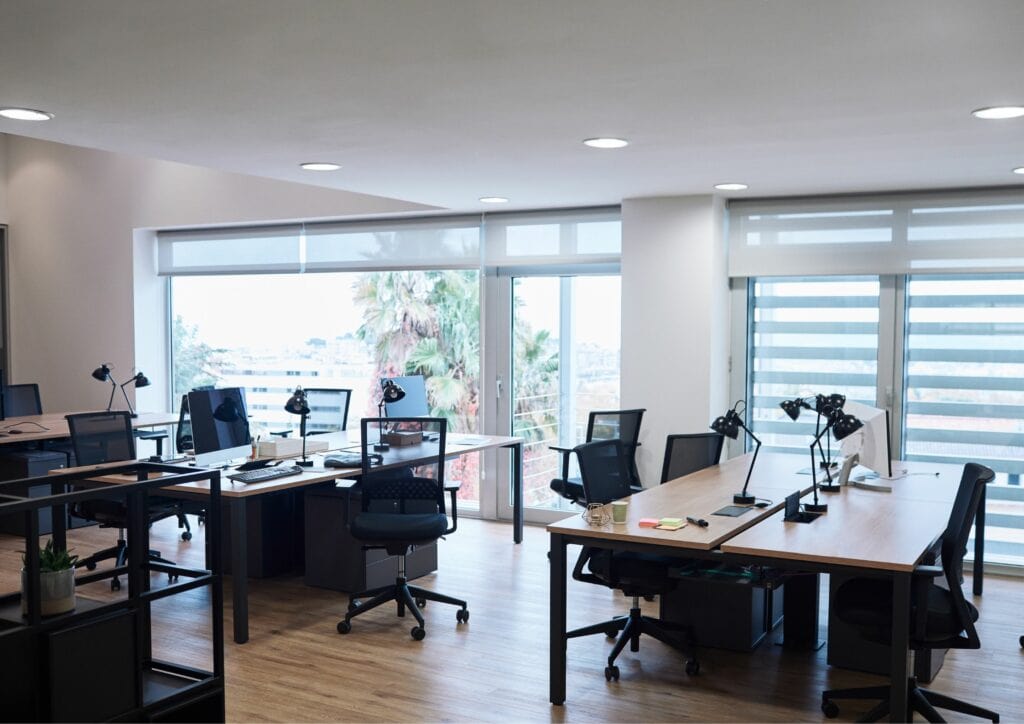
Office Vacancy Rates 2022 Report
The commercial real estate market is ever-changing, and office vacancy rates are no exception. In just a few short years, the pandemic has caused a major shift in the way people work—and that shift is likely to continue in the years to come. So, what does the future of commercial real estate mean for office vacancies and real estate trends? Here’s a look at what experts are predicting for the future of office space.

Table of Contents
What is the standard office vacancy rate?
In the United States, office space vacancy rates increased to an average of 12.3% in 2020. Primarily due to the impacts of coronavirus, employees moved away from traditional offices and adopted a work-from-home (WFH) or a hybrid work model.
With these changes happening across most industries all at once, it is no wonder why the office vacancy rate is so high.
What is the most important thing the vacancy rate indicates?
A rising vacancy rate is one of the most important indicators to consider when considering real estate. Expressed as a percentage – the vacancy rate is an economic indicator that measures the percentage of vacant rentals.
Higher vacancy rates indicate the following:
- A high level of vacant units
- Low level of occupancy
- Lack of demand
- High vacancy rates will often result in lower rents due to a supply-demand imbalance.
Low vacancy rates, on the other hand, indicate the following:
- Low level of vacant units
- High level of occupancy
- Increased demand
- Low vacancy rates will often result in higher demand, mainly due to scarcity.

How does the 2022 office vacancy rate look compared to 2021?
As of July 2021, the office vacancy rate in the United States was 10.1%. In 2020, the office vacancy rate was 12.3%. While it appears trending in the right direction, this is still a significant increase from the 8.6% vacancy rate recorded in 2019, and the trend is expected to continue into 2022.
The pandemic has profoundly impacted the office market over the past two years, with more companies working remotely or downsizing. As a result, there is expected to be a glut of commercial real estate in the coming year. Landlords are expected to offer significant discounts to entice tenants, and there is likely to be an increase in vacant properties.
However, despite the challenges posed by the pandemic, the office market is expected to recover in the long term. Many companies plan to expand or relocate their operations, and the demand for office space is expected to increase as the economy recovers. As such, while the office vacancy rate is expected to improve in the short term, it is predicted to return to pre-pandemic levels within a few years.
In Conclusion
There is no doubt the pandemic has had a profound impact on the office market. While the market is expected to recover in the long term, as strongly indicated by vacancy rates improving year-over-year. There lies a great opportunity for contrarian investors amongst this fear-mongering. Furthermore, we believe that more companies will plan to expand or relocate their operations, and the demand for office spaces and the cost to rent is expected to increase as the economy recovers. Office vacancy rates by city are bound to be different area to area so make sure you take advantage of our expert team by contacting us to find out more!
About The Author

Jesse Shemesh
Disclaimer
Please note that Point Acquisitions is not a tax expert or tax advisor. The information on our blogs and pages is for general informational purposes only and should not be relied upon as legal, tax, or accounting advice. Any information provided does not constitute professional advice or create an attorney-client or any other professional relationship. We recommend that you consult with your tax advisor or seek professional advice before making any decisions based on the information provided on our blogs and pages. Point Acquisitions is not responsible for any actions taken based on the information provided on our blogs and pages.
1031 Exchange Capital Gains Tax Deferral
According to a 2021 report by the National Real Estate Exchange Services (RES), over 240,000 1031 exchange transactions were completed in the United States, totaling $100 billion. This impressive figure underscores the role of 1031 exchanges in the real estate…
Read More1031 Exchange Benefits
As of Q4 2023, the national vacancy rate for all commercial property types in the United States sat at 9.2%, according to CBRE’s latest insights and research. This represents a slight decrease compared to the previous quarter and suggests a…
Read MoreUnderstanding Commercial Property Value
The art of commercial real estate valuation is a critical skill in an industry teeming with over $1 trillion in yearly transactions. Our detailed guide on how to value commercial property is designed to elevate your expertise and give you…
Read More

